Nodal Analysis - Gas Lift Optimizer
1. Overview
This module within the Nodal Analysis section is designed to optimize gas lift performance for maximizing oil production under specific surface/subsurface setups and operating conditions.
Traditionally, evaluating the effect of varying gas injection rates required manually saving multiple VLPs under different wellbore and surface configurations, then comparing their intersections with the IPR to identify optimal conditions. This feature simplifies that process by integrating all steps — IPR/VLP generation, gas lift rate variation, and case comparison—into one streamlined tool. The GIF below demonstrates this simplified approach:
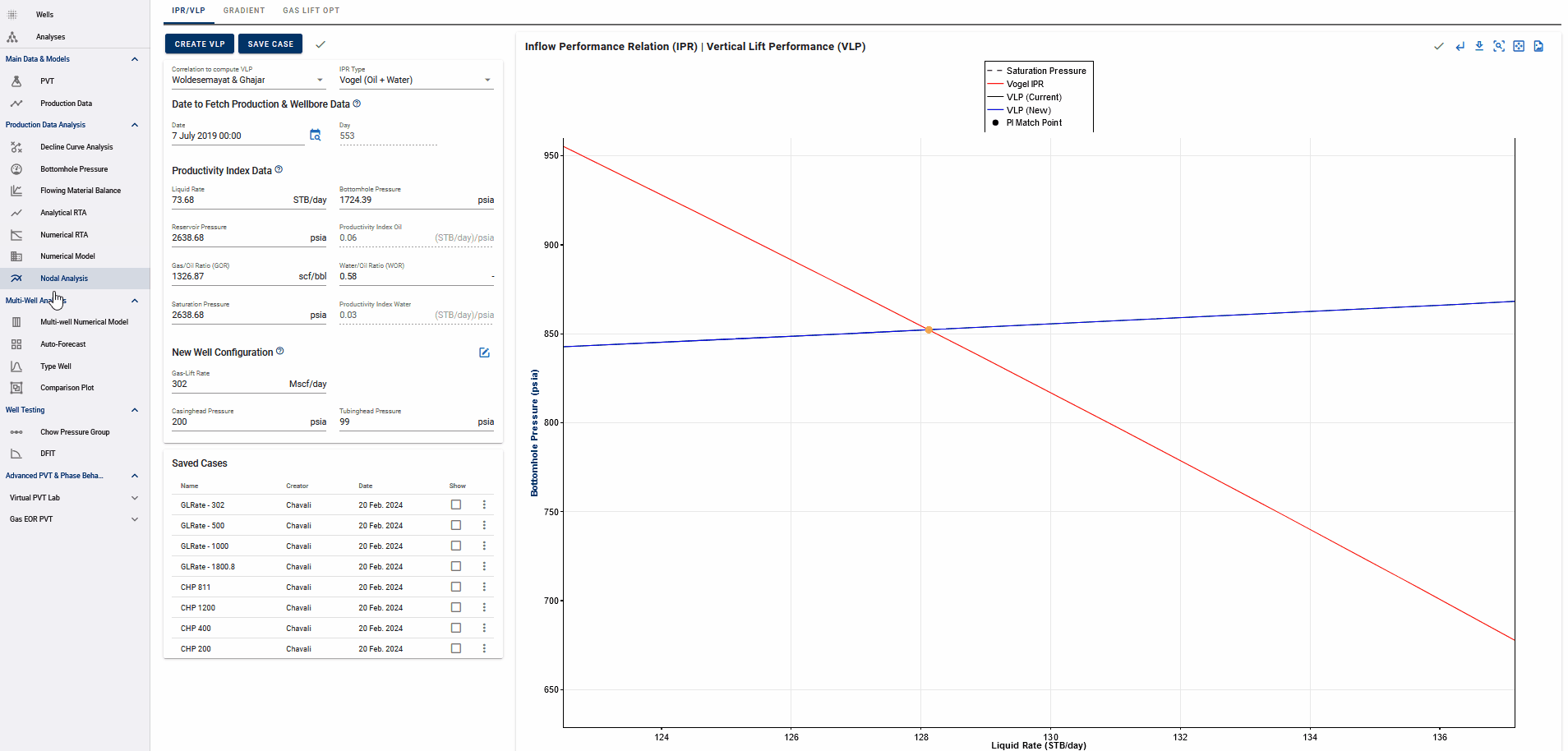
Within this tool, you can:
- Set up inflow performance relationships (IPRs) for specific dates in the well’s history.
- Test sensitivities on wellhead pressures (tubing and casing), bottomhole pressure correlations, and wellbore configurations.
- Evaluate the effect of changing gas lift injection rates.
- Quantify the oil rate uplift potential and optimize gas injection strategies.
The goal is to provide actionable insights for maximizing return on injected gas — whether that means adjusting wellbore hardware, tuning injection strategies, or redesigning surface conditions.
2. Basics
To begin, an IPR must be created in the IPR/VLP section for a selected date in the well’s production history. VLPs are generated based on:
- Surface pressures (tubing and casing),
- Gas-Oil Ratio (GOR),
- Gas lift injection rates,
- Bottomhole pressure (BHP) correlations,
- Wellbore configurations.
Each VLP that intersects the IPR represents an operating point (i.e., expected oil rate under specific conditions). By generating multiple VLPs for varying gas injection rates, a gas lift optimization curve is built—plotting oil rate against injection rate.
Typically, oil rate increases with gas injection until the added friction from excessive gas reduces the benefit. The optimization curve helps you identify:
- The current operating point,
- The maximum achievable oil rate,
- The required gas injection rate to reach that optimum.
These insights support decisions related to gas allocation, surface facility design, and economic planning.
Workflow Summary:
- Select the date for IPR generation in the IPR/VLP section.
- The current IPR and related input are loaded into the optimizer on first access.
-
Use the MODIFY CASES button to create multiple sensitivity cases, varying:
- Wellhead pressures (CHP and THP)
- Gas-Oil Ratio (GOR)
- BHP correlation
- Wellbore configuration
-
Save and run the cases – optimization curves are generated automatically.
- Review optimization curves and summary tables for all cases.
3. Case comparisons
3.1. Varying Wellhead Pressures
This example compares different combinations of casing and tubing head pressures (CHP, THP). The base case reflects current operating conditions, while other cases simulate surface pressure changes.
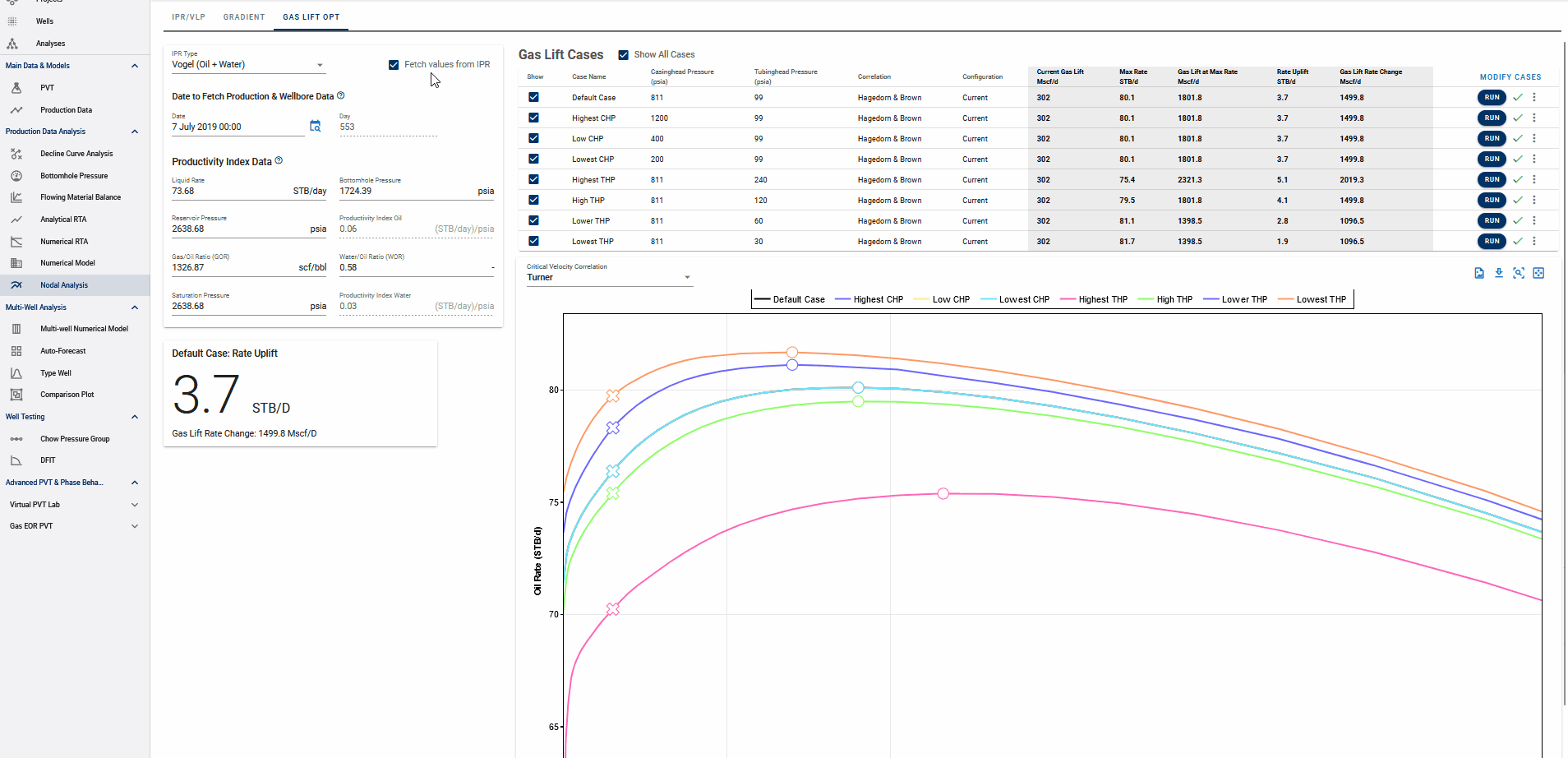
In the example in section 2, a 129.4 STB/D rate uplift is achievable by increasing gas injection by ~900 Mscf/D. Alternatively, reducing THP to 14.7 psia achieves similar gains without increasing injection.
Note
Varying CHP may have no effect in single-valve systems, but in multi-valve wells, it changes the depth of gas entry—thus affecting optimization.
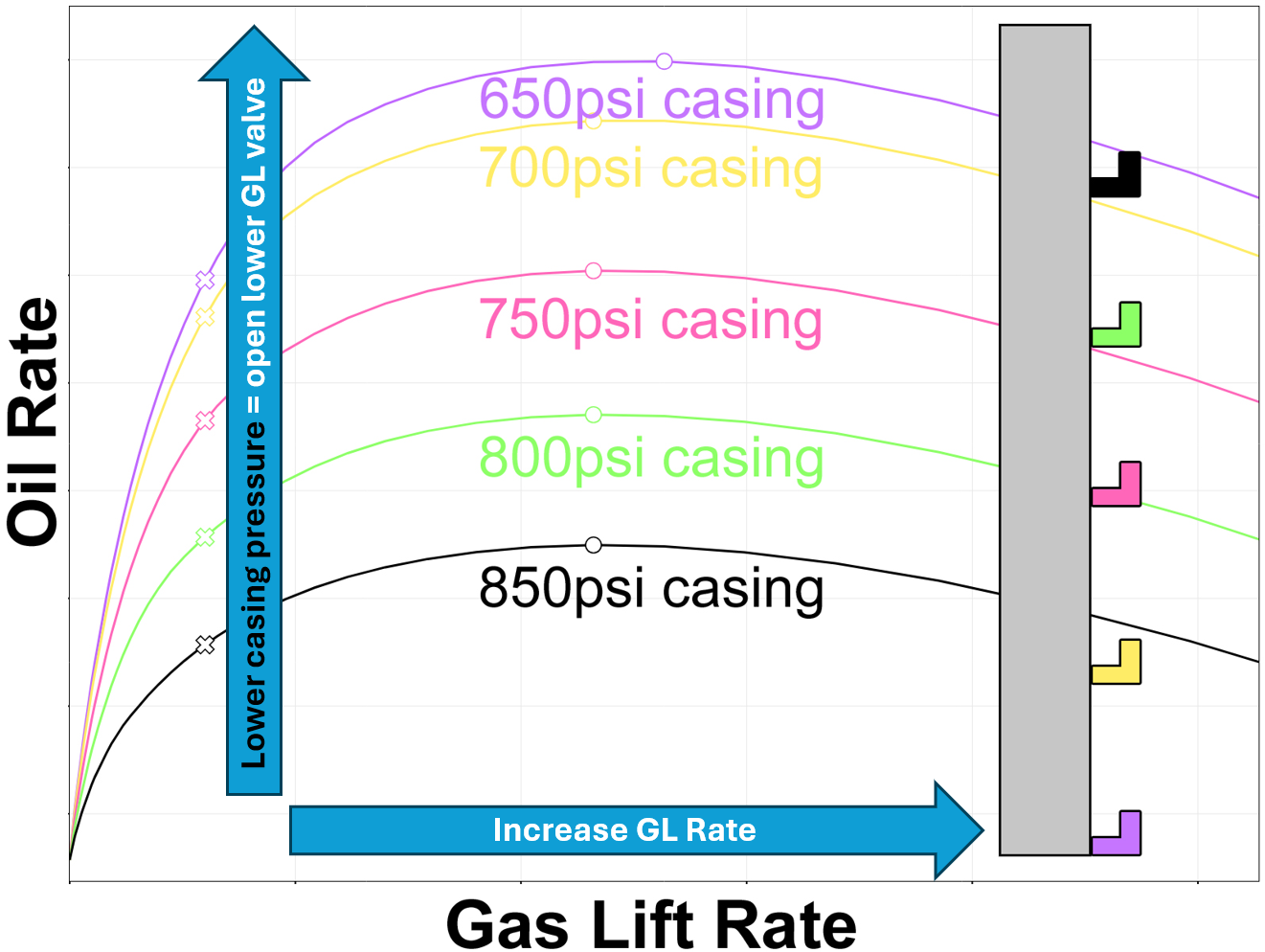
3.2. Varying BHP Correlations
Here, only the correlations used to compute the VLP are varied and you can see how VLPs from other correlations respond to the increasing gas injection rate. Each correlation produces a different response to gas injection.
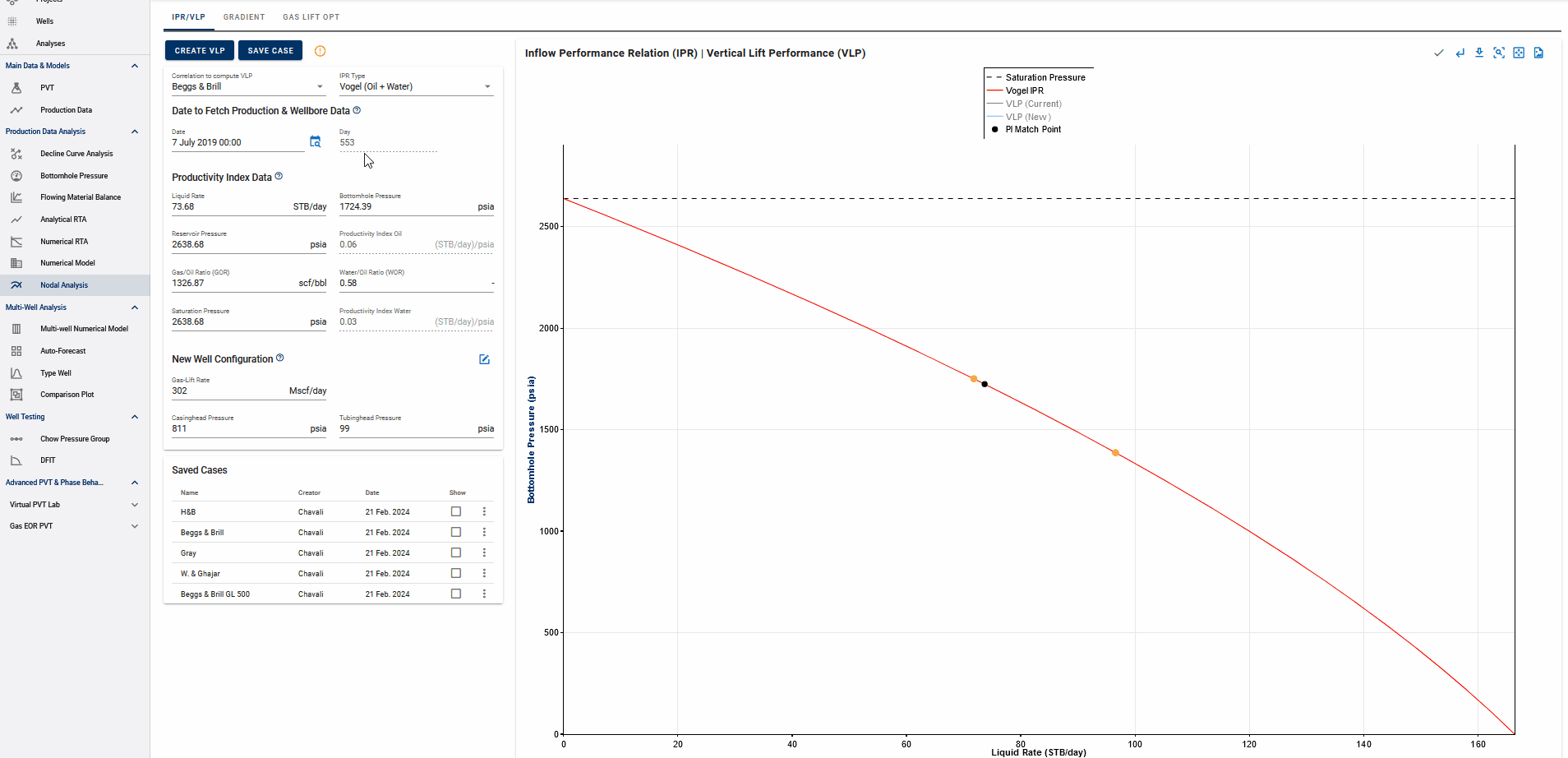
For this well, Woldesemayat & Ghajar yields the best match with the IPR. It shows a potential uplift of 129.3 STB/D with an increase of ~900 Mscf/D gas.
3.3. Comparing wellbore configurations
This strictly requires that the alternative wellbore configurations used should be some form of gas lift. You can add or remove valves from the tubing, adjust valve depths, opening and closing pressures, and compute the gas lift optimization curve for alternate gas lift designs.
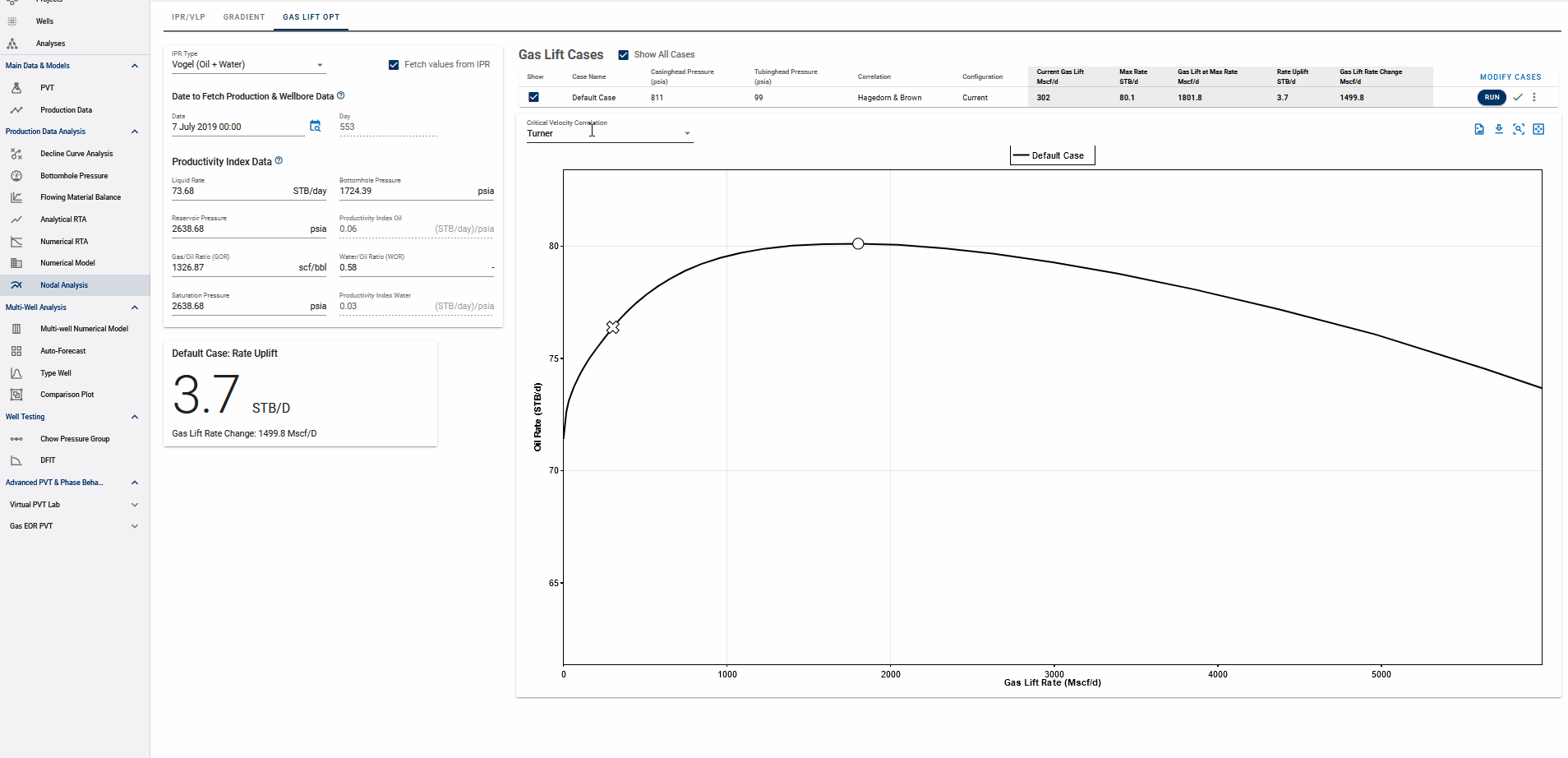
4. Multi-point sampling for IPRs
Select a more representative IPR curve by minimizing the impact of outliers. A 10-day history sample is used to illustrate the range of possible IPRs.
Show Additional Points on the Graph - You can display liquid rate and bottomhole pressure (BHP) points from other dates on the IPR/VLP graph. It helps you compare well performance on different days, all within the same plot. Each point is clickable. selecting one will automatically update the graph to that date’s IPR/VLP inputs and reposition the cursor to show the corresponding liquid rate and BHP. This makes it easy to explore trends, spot high-performance periods, and assess how current operations compare to past conditions.
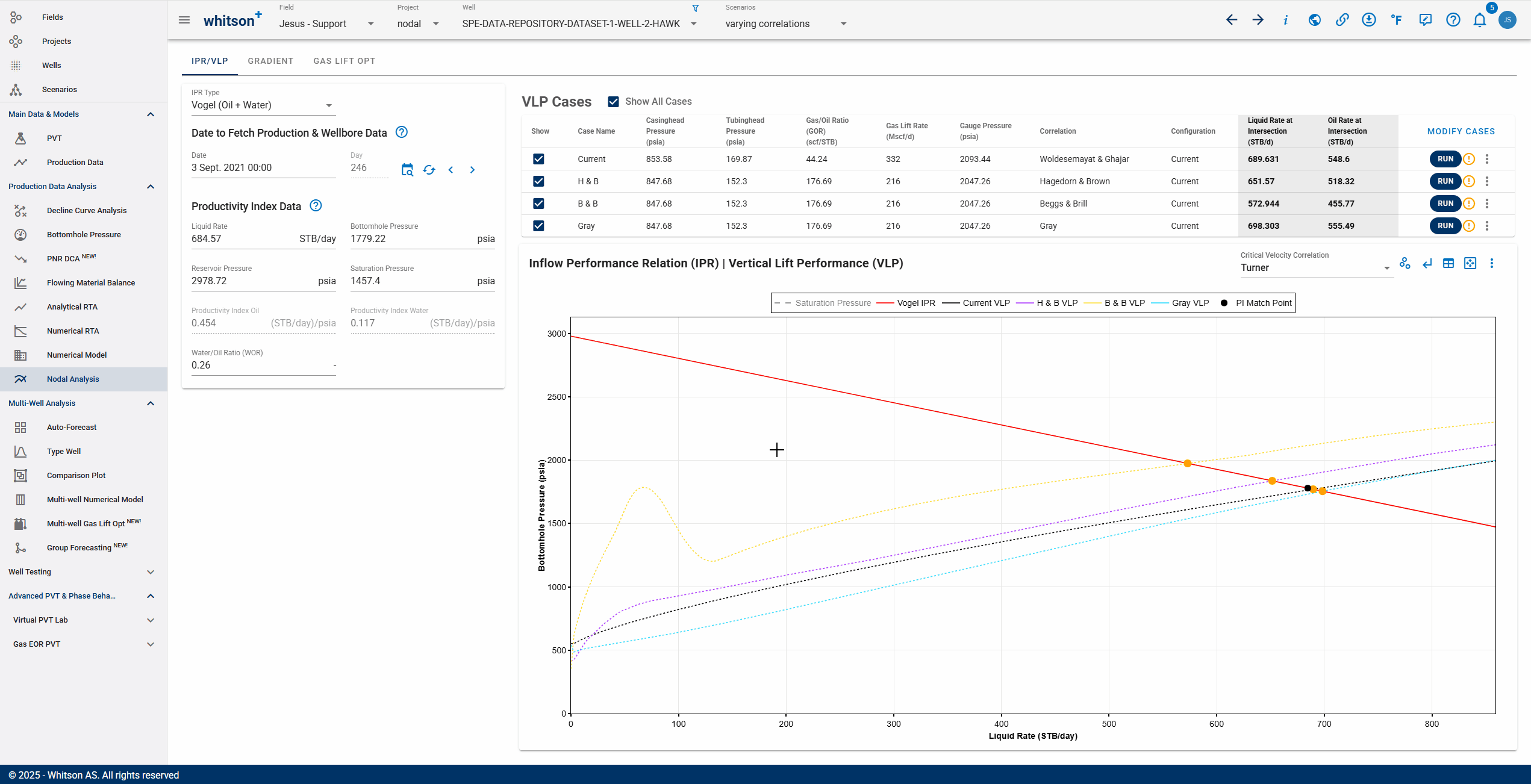
Show Additional IPR Curves on the Graph - You can overlay IPR curves from other dates on the same graph, helping you visualize how inflow performance can changed with respect to time. Each additional IPR curve gives context for evaluating current well conditions relative to past performance. This is useful for spotting inflow degradation, improvement, or validating the effectiveness of interventions.
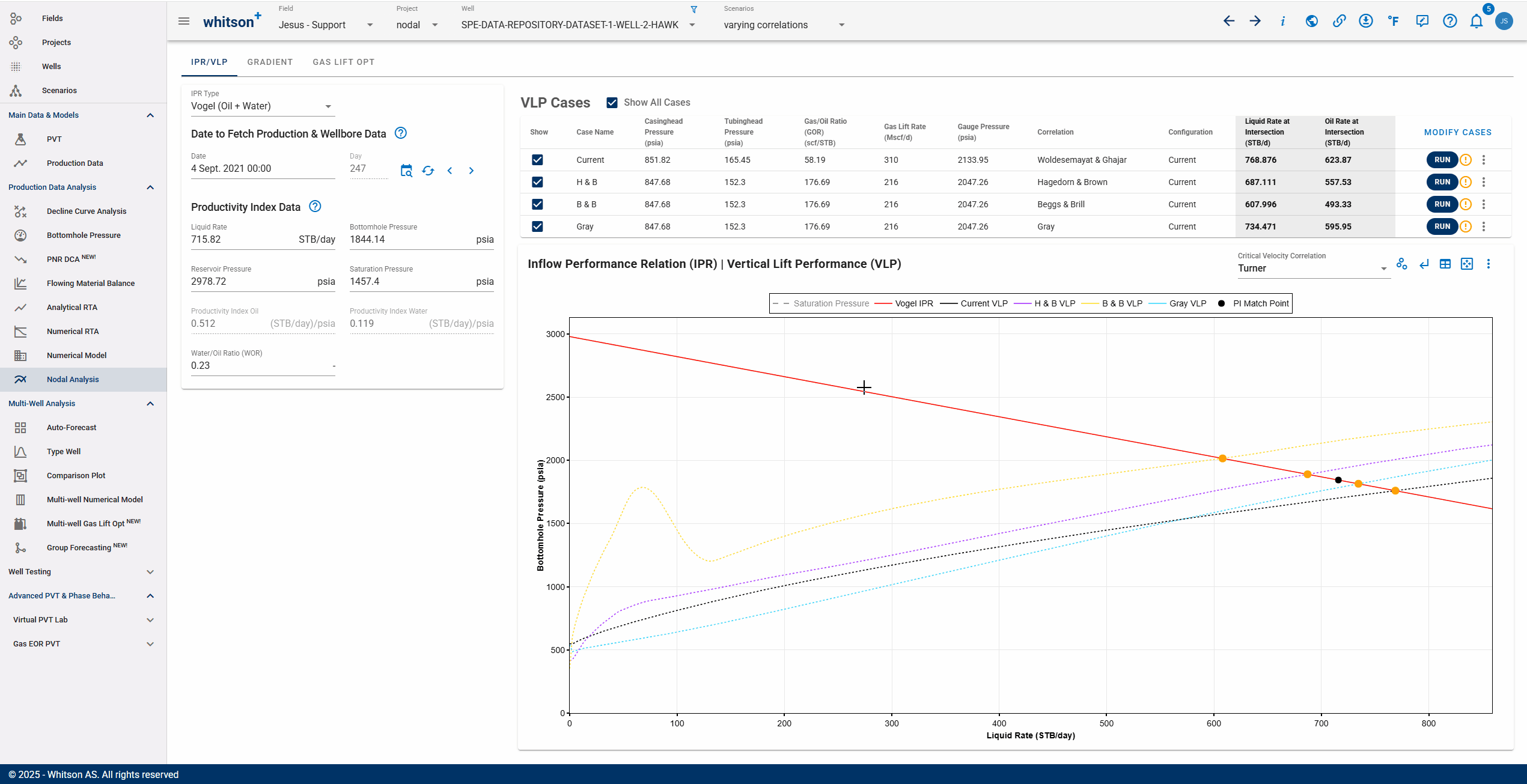
5. Tips
-
IPR Selection - Finalize on the IPR to be used in the IPR/VLP section. Then in the Gas Lift Optimization tab, ensure that the right values are populated for creating the underlying IPR by clicking 'Fetch values from IPR'. Uncheck and check again if the values seem like they are from a previous IPR selection. Run the cases again by clicking the run button next to each case, every time the IPR is updated. If you do not run some cases, that is equivalent to comparing results from two different points in well history.
-
Running a Case - Each time a case is updated, it will run automatically and update the gas lift optimization curve. No need to re-run when directly modifying a case input. However, if the IPR changes, you must manually re-run each case to refresh the optimization results.
-
New Wellbore Configurations - You can also compare new wellbore configurations, click on Add configuration button where the cases need to be defined and start by copying the current configuration, or building a whole new configuration from scratch. Be sure to give it a name and save it. Once you go back to the case inputs, use the dropdown under configuration to select this newly created configuration by its saved name. Note that configurations once saved cannot be altered as of now, just create a new one all over again to make modifications.